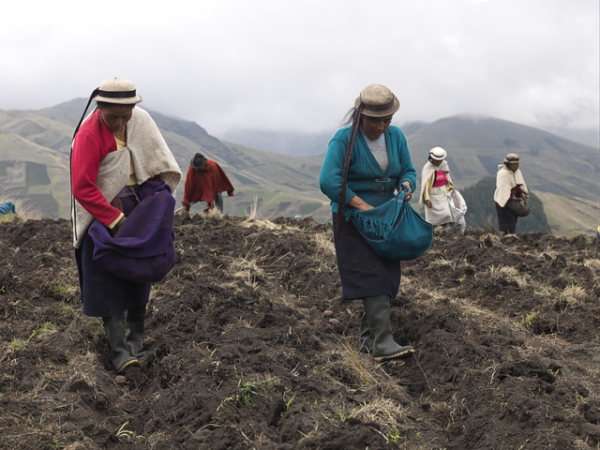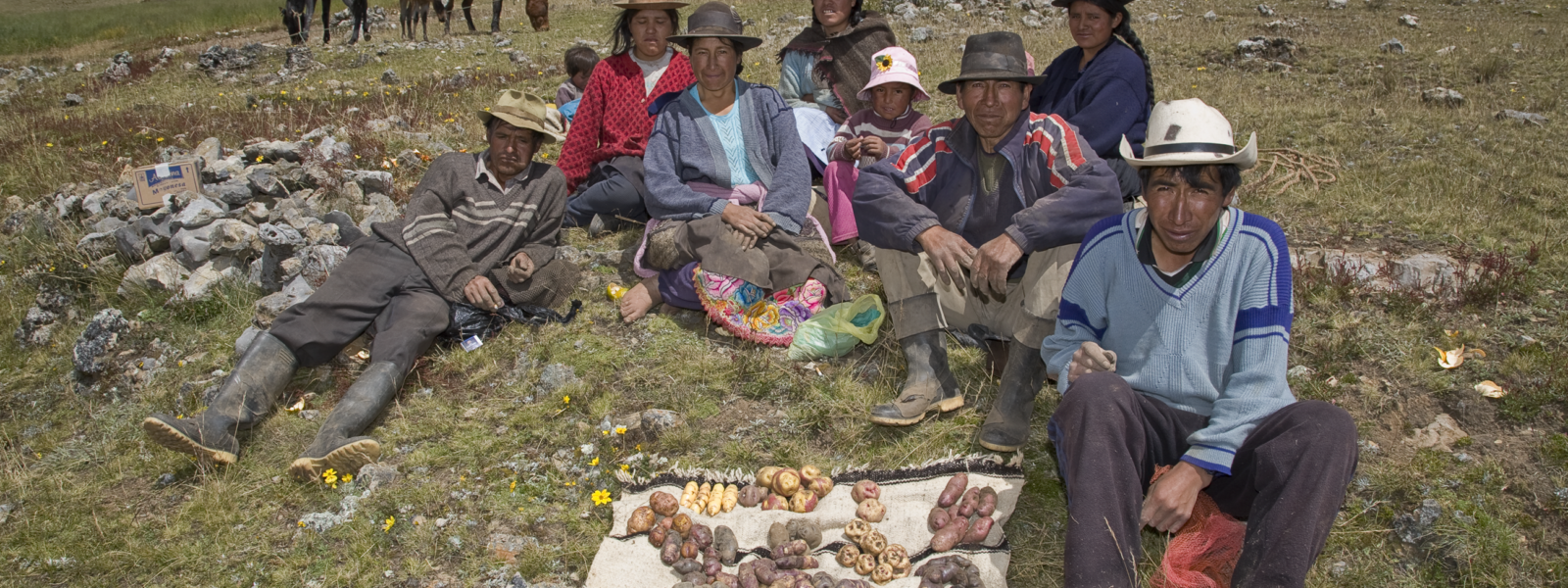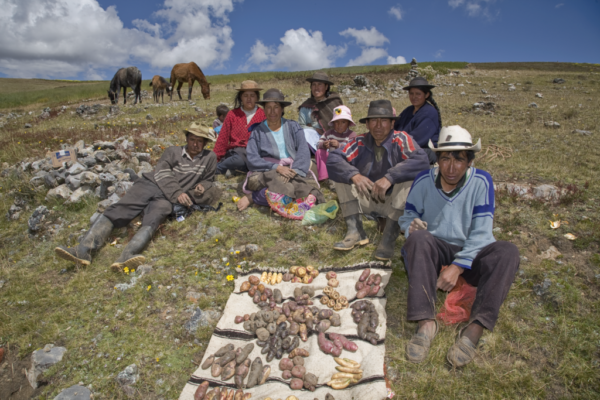New research examines the factors that influence the adoption of agricultural
technology by men and women.
Closing gender gaps in the agricultural sector is a key element in reducing poverty and improving food security. Women today are the hidden face of agriculture, playing a fundamental role from food production to commercialization, and yet not only do they not have the same access to resources and technological innovations, but often the technologies are not designed considering women’s needs and conditions.
The Latin American gender team of the International Potato Center (CIP) conducted a study to investigate the factors that influence the adoption of agricultural technology by men and women in the Andean region, whose agricultural systems are based on potato production. The main objective of the study was to generate recommendations that can inform the design and development of gender sensitive agricultural technologies. Qualitative information was collected through the implementation of focus group discussions, observation and interviews with technical personnel working directly in CIP’s areas of intervention in the Andean Region (Bolivia, Ecuador and Peru) in the promotion of agricultural technology innovation for food security. The study was carried out with the support of the CGIAR Research Programs on Roots, Tubers and Bananas (RTB), and on Policy, Institutions and Markets (PIM).
One important result of the study is that technology itself is not neutral and entails gender biases that can occur when the conditions of the target group (men, women, youth, or other disadvantaged groups) are not considered at different stages.
For example, men and women in the community of Achullay in Ecuador, highlighted different aspects about the use of chemical or organic inputs for planting and fumigation. Women claimed that they prefer to use organic fertilizers because of their easy preparation, low cost, and because they can prepare and apply it themselves. Although it may require more time in comparison to the application of chemicals, it is preferred due to health issues. Women mentioned that food produced with organic inputs is tastier. On the other hand, men mention that the disadvantage of using organic inputs is that they are less effective, especially against late blight, a condition that considerably affects potato production. Therefore, they report using chemicals for production destined to the market (because they request larger size potatoes), whereas they do not use chemicals for production destined to home-consumption.
Analyzing the results of the research, we have been able to catalog the different factors that influence technology adoption in three different types: i) internal factors that include elements related to the productive context (social, political, environmental, economic and cultural), historical and educational factors, and gender roles; ii) technological attributes, which are inherent to technology and its use (technical, structural and operational characteristics of the technology); and iii) external factors related to access to productive resources (land, capital, labor), physical access to productive areas and access to information.

The hidden face of agriculture, women play a core role from production to commercialization. Photo: CIP
According to testimonies of farmers from Jacopampa in Bolivia, and technicians working in technology dissemination, one of the important tasks is potato selection by size. They say: “This task is usually performed by women manually.” In order to reduce the time devoted to this task, equipment for mechanized potato selection was introduced. The evaluations showed positive results but the equipment was not adopted. This was due to the fact that in validation meetings more men than women participated and they gladly operated the equipment. However, within the families, it was still the women who carried out this task. Women found the operation difficult due to the height of the equipment and the strength necessary to lift the potato bags to feed the equipment. Once these conditions were understood, a much simpler equipment (lower size, without cranks, where the potatoes slipped by gravity and were pushed manually through sieves) was introduced. This equipment reduced the time allocated to manual selection, but its simplicity, low bearing and lower requirement of physical strength allowed women to adopt it.
Throughout the different focus groups, the relationship between gender roles (accepted in the context) and the type of technology adopted by men and women was clearly observed. In Peru, for example, women more frequently mentioned adopting technologies related to food processing, seed selection, composting, and sprinkler irrigation. These technologies respond to gender roles assigned to women within the household and the community, such as food preparation, production of minor crops for self-consumption and waste management. In the case of men, they more frequently mentioned adopting technologies related to productive infrastructure (seed storage, construction of platforms), plot organization (rotation of crops), and technologies that require physical strength and/or intensive use of labor.
In conclusion, the results of the study showed that the potential adoption of agricultural technologies may differ between women and men, depending on different factors and their interactions. That is to say that factors do not independently influence the adoption of technology by farmers, but rather interact with each other thus shaping the potential adoption of agricultural technologies.
The final report of this work will be available online soon.
Blog contributed by Dr. Claudia Babini of the International Potato Center.

